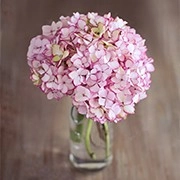Fruit Picking Tips

Have you ever bitten into a fruit that looked perfect on the outside, only to find it dry, bland, or unripe inside? Choosing ripe and juicy fruits can feel like a guessing game, but with the right knowledge, you can become a fruit-picking expert in no time.
Let's break down how to pick the best fruits every time you shop—whether you're at the supermarket or a local farmer's market.
Why Ripe Fruits Matter
Ripe fruits don't just taste better—they also contain peak levels of vitamins, antioxidants, and natural sugars. According to the USDA, fruits harvested at full ripeness offer the best nutritional value, including higher levels of vitamin C, flavonoids, and beta-carotene. Learning to spot ripeness helps reduce food waste and enhances your eating experience.
General Signs of Ripeness
Though each fruit has its own indicators, there are general signs to look for:
• Fragrance: Ripe fruits usually have a pleasant, sweet aroma. If a fruit smells like nothing, it might not be ripe yet.
• Feel: Gently squeeze the fruit. A little give—without being mushy—often means it's ready.
• Color: Bright, vibrant color often signals ripeness. Dull or green patches may indicate it's not yet ripe.
• Weight: Ripe fruit feels heavier for its size due to water content, a sign it's juicy inside.
Let's dive into the specifics by fruit type.
How to Pick the Perfect Apple
Choose apples that are firm with smooth, brightly colored skin. Avoid ones with bruises, wrinkles, or soft spots. A sweet smell around the stem indicates the apple is ripe. Apples do not ripen much after being picked, so what you see is what you get.
Bananas: Ripeness by Skin Color
Bananas are unique because they continue to ripen after harvest. Green bananas are starchy and firm, while yellow ones are sweet and soft. Look for tiny brown specks on the peel for peak ripeness. If the skin turns entirely brown, the banana is overripe but can still be great for baking or smoothies.
Watermelon: Knock, Look, and Lift
A ripe watermelon will have:
• A creamy yellow spot where it sat on the ground—this is called the “field spot."
• A deep hollow sound when tapped (a dull sound could mean it's overripe or underripe).
• A heavy feel for its size, indicating it's full of juice.
Avoid melons with soft spots or a white field spot.
Pineapples: Smell and Tug Test
Smell the base of the pineapple—it should have a strong, sweet scent. The skin should be golden, not green. Gently tug one of the inner leaves from the crown; if it pulls out easily, the pineapple is likely ripe. Avoid fruits that feel too soft or smell fermented.
Avocados: Gentle Pressure Works
Press the avocado near the top. A ripe one will yield slightly without feeling mushy. Color helps too: most varieties turn darker when ripe. For Hass avocados, blackish-purple skin is a good sign. Plan ahead: if you need it in a few days, choose one that's still firm.
Grapes: Check the Stems
Ripe grapes are plump, firmly attached to green stems, and have a slight powdery coating called "bloom," which protects the fruit. Avoid grapes with shriveled skins or brown stems, which indicate age or dehydration.
Mangoes: Squeeze, Don't Go by Color
Mangoes come in many varieties, and not all turn red or yellow when ripe. Instead, use your nose and fingers. A ripe mango smells fragrant at the stem and yields slightly to gentle pressure. Avoid wrinkly or overly soft mangoes.
Peaches and Nectarines: The Thumb Test
These fruits should feel soft at the seam and give under gentle pressure. They should also smell sweet and summery. If you notice wrinkles near the stem, it often means the fruit has ripened naturally and is very juicy.
Strawberries: Look for Shine and Red Color
Strawberries don't ripen after picking. Choose berries that are fully red and shiny, with bright green caps. Avoid white or green tips, which indicate immaturity. The fruit should feel firm but not hard.
How to Store Ripe Fruits
Once you've picked your perfect fruit, storing it correctly is just as important:
• Refrigerate: Berries, grapes, and apples last longer when cold.
• Countertop: Store bananas, mangoes, and avocados at room temperature until ripe.
• Separate: Keep ethylene-producing fruits (like apples and bananas) away from others to avoid premature ripening.
• Ventilation: Use open bowls or breathable bags to prevent moisture buildup.
Common Mistakes to Avoid
• Picking fruit based on color alone.
• Buying underripe fruit expecting it to ripen at home (except bananas and avocados).
• Storing all fruits in the fridge immediately.
• Ignoring seasonal cues—fruits in-season are more likely to be naturally ripe and flavorful.
Final Thoughts: Trust Your Senses
Learning to pick ripe fruits is a skill you can master with practice. Use your eyes, nose, hands, and even ears (for melons!) to make better choices. Over time, you'll save money, reduce waste, and enjoy tastier, juicier fruit every time.

Have you ever had a surprising fruit-picking win—or fail? Share your stories or ask about a specific fruit you struggle to choose. Let's turn every fruit shopping trip into a confident, delicious success!

 · Cate team
· Cate team